Beretta’s Tip-Up Pistols: Concealed Carry Evolution
Beretta’s foray into the design of small, tip-up barreled pistols in the 1950s represented a pivotal moment in the evolution of firearm technology. This innovative design broke away from the conventional mechanisms prevalent at the time, offering a novel solution that emphasized ease of use and safety. The tip-up barrel mechanism allowed users to load the chamber directly without the need to pull back the slide, a feature that was particularly advantageous for individuals who might find the strength required to operate traditional slide mechanisms challenging. This design not only simplified the loading process but also made it safer and more accessible, catering to a broader range of users. The introduction of this mechanism demonstrated Beretta’s commitment to innovation, seeking to improve the user experience by addressing common difficulties encountered with firearm operations.

The Beretta 950 model, often associated with the iconic character James Bond, exemplifies the lasting impact and appeal of Beretta’s tip-up barreled pistols. Introduced as James Bond’s weapon of choice, the Beretta 950 quickly gained fame and recognition for its sleek design and practical features. Its compact size, combined with the ease of loading and unloading provided by the tip-up barrel, made it an ideal choice for covert operations and concealed carry scenarios. The 950’s association with a character known for sophistication and efficiency underscored the model’s alignment with qualities of reliability, elegance, and advanced functionality. Through the Beretta 950 and its innovative design, Beretta not only cemented its place in the history of firearm manufacturing but also contributed to the cultural fabric, influencing perceptions of personal defense and the aesthetics of firearms.
Beretta 950: James Bond’s First Choice
The Beretta 950’s distinction as James Bond’s initial weapon of choice not only cements its prominence within popular culture but also underscores Beretta’s profound influence on the firearm industry, blending unparalleled elegance with operational effectiveness. This specific model, renowned for its sleek design and innovative tip-up barrel mechanism, exemplifies Beretta’s dedication to creating firearms that prioritize both aesthetics and user-friendly functionality.
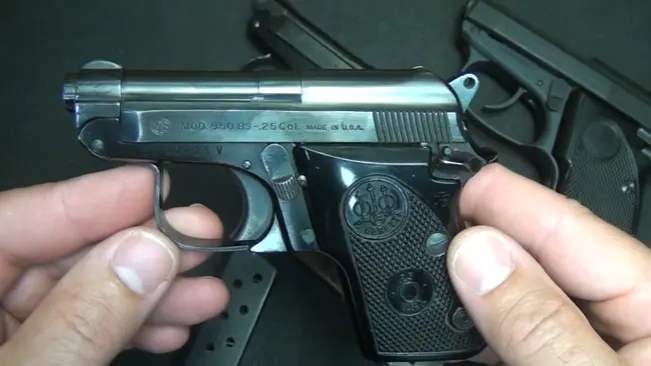
The adoption of the Beretta 950 by a cultural icon such as James Bond—a symbol of sophistication, efficiency, and the quintessence of cool—further elevates its status, illustrating its appeal as much more than just a tool for defense but as a piece of cinematic and cultural history. The choice of the Beretta 950 for such a character underscores the pistol’s embodiment of reliability, ease of use, and concealability, qualities essential for Bond’s covert operations and aligning perfectly with the suave and competent image he projects. Through this legendary association, the Beretta 950 not only showcases Beretta’s legacy in marrying form with function but also solidifies its place in the annals of both firearm innovation and pop culture, reflecting the brand’s lasting impact on the perception and devel
Rise of the .25 ACP in Europe
In the landscape of European self-defense and personal weaponry, the .25 ACP (Automatic Colt Pistol) experienced a notable surge in popularity, emerging as a compelling choice for those valuing a balance between firepower and ease of carry. This shift towards smaller, more concealable firearms reflected a broader change in societal attitudes towards personal defense, where the demand for discreet yet effective protection became paramount.
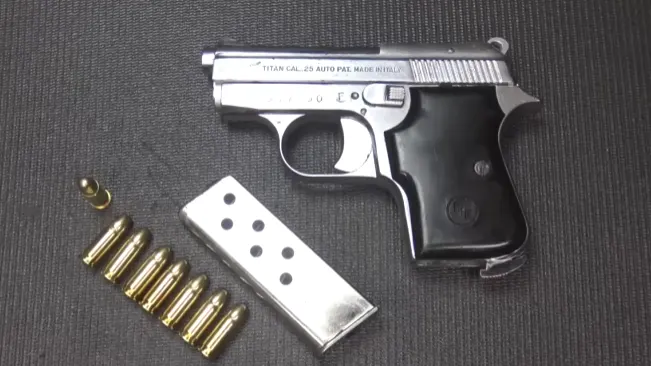
The .25 ACP, with its minimal recoil and compact size, offered an appealing solution for individuals seeking a self-defense round that could be easily concealed within everyday attire without sacrificing reliability. Concurrently, the adoption of the .32 ACP within the European context signified a diversification of preferences, accommodating those who sought a slightly more powerful round while still prioritizing portability and concealability.

This period marked a significant evolution in the European arsenal, characterized by a nuanced appreciation for the trade-offs between caliber size, ballistic effectiveness, and the practical considerations of carrying a firearm for personal protection. The rise of the .25 ACP, alongside the .32 ACP, underscores a transformative phase in European self-defense strategies, highlighting a shift towards a more personalized and situational approach to firearm selection, where the balance of power and portability defined the preferences of the era.
Beretta Family: Models and Innovations
Beretta’s continuous drive towards innovation and adaptability in the firearm industry is exemplified through the introduction of groundbreaking models such as the Tomcat in .32 ACP and the versatile double-action 21 and 30/32 in both .22 and .25 ACP calibers.

These models, emblematic of Beretta’s commitment to catering to diverse shooter preferences, incorporate advanced features that enhance user experience and safety. The Tomcat, with its distinctive tip-up barrel design, offers users the convenience of easy loading and unloading, appealing to those seeking a blend of compactness and power in a self-defense weapon. Similarly, the 21 and 30/32 models, available in the popular .22 and .25 ACP calibers, provide options for shooters looking for varying degrees of firepower and recoil, without compromising on the reliability and precision engineering Beretta is known for.

The introduction of stainless steel variants for these models further underscores Beretta’s attention to durability and aesthetic appeal, offering shooters firearms that are not only resistant to corrosion and wear but also boast a sleek, modern look that appeals to contemporary tastes. This strategic expansion of the Beretta family through these models demonstrates the company’s ability to blend traditional craftsmanship with cutting-edge technology, ensuring that each firearm meets the high standards of functionality, safety, and style demanded by today’s discerning shooters. Through such innovations, Beretta has solidified its position as a leader in the firearm manufacturing sector, continuously evolving its product line to meet and anticipate the changing needs of the global market.
Discontinued Model 86 and the Rise of Micro Compacts
The discontinuation of the Beretta Model 86, a distinctive pistol known for its tip-up barrel design and larger frame, marks a significant turning point in the firearm market, underscoring a pronounced shift towards the preference for smaller, more concealable firearms, known as micro compacts. This transition is not merely a reflection of changing consumer tastes but also an acknowledgment of the strides made in firearm technology and design, allowing for the creation of highly reliable weapons in smaller packages.

The Model 86, while innovative in its time for allowing users to load the chamber without pulling the slide, gradually fell out of favor as shooters began to prioritize ease of concealment and portability over other features. The rise of microcompacts is a direct response to this demand, showcasing the industry’s ability to innovate and adapt by producing firearms that are not only compact and easy to carry discreetly but also maintain a high level of performance and safety. This trend towards miniaturization reflects a broader societal shift towards personal defense weapons that can be seamlessly integrated into daily life without compromising on effectiveness or aesthetics.
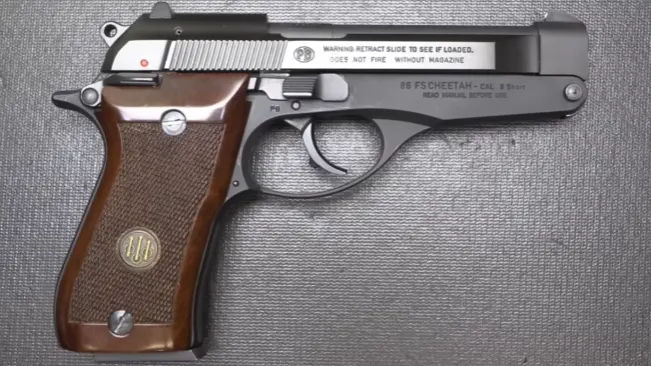
Manufacturers have responded to this shift by employing advanced materials and engineering techniques to reduce size and weight while enhancing the functionality and durability of their offerings. In this evolving landscape, the discontinuation of models like the 86 serves as a clear indicator of the firearm industry’s direction, prioritizing advancements that meet the modern shooter’s expectations for concealability, reliability, and technological sophistication.
Unique Advantage of Tip-Up Barrels
The tip-up barrel mechanism, a hallmark of innovation within the firearm industry, offers a unique combination of user-friendly loading and enhanced safety, distinguishing itself as a significant advancement in firearm design. This ingenious feature, particularly exemplified in models such as the Beretta 92, allows the user to load or unload the chamber directly without the need to manipulate the slide, providing an invaluable benefit for those with limited hand strength or those seeking a more straightforward approach to firearm handling.

Beyond the practicality of easier loading, the tip-up barrel design inherently increases safety by enabling the user to visually confirm whether the chamber is empty, thus reducing the risk of accidental discharge. This design philosophy, while enhancing user convenience, also contributes to the firearm’s reliability, especially under adverse conditions. The Beretta 92, with its adoption of this feature, showcases an exemplary level of dependability, maintaining operational integrity even in the most challenging environments.
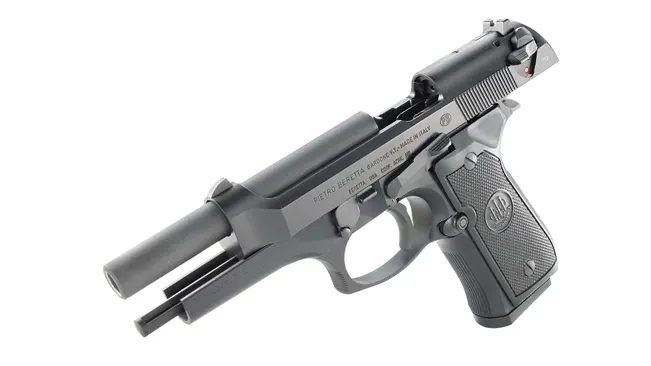
Its success underscores the effectiveness of the tip-up barrel not just in terms of ease and safety, but also in ensuring that the weapon remains functional when it matters most. This combination of user-centric design and reliability has cemented the tip-up barrel feature as a noteworthy innovation in the realm of firearm technology, reflecting a deep understanding of the needs and challenges faced by firearm users, from novice shooters to seasoned professionals.
Selecting the Right Ammunition
The intricate relationship between a pistol’s performance and its ammunition becomes especially pronounced in the case of compact models such as the Beretta Model 21.
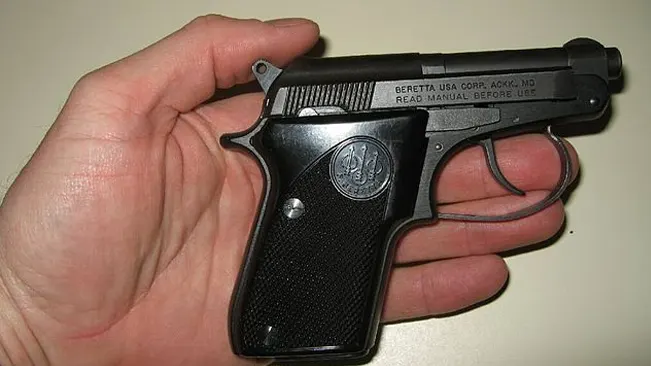
This specific model, favored for its compact size and reliability, exhibits a marked sensitivity to the type of ammunition it uses, making the selection process critical for ensuring the firearm operates at its peak. The dependence of the Model 21 on high-quality ammunition is not just about achieving superior accuracy or reducing the likelihood of misfires, but about the overall synergy between the firearm’s mechanical design and the ammunition’s physical and chemical properties. High-quality rounds are recommended because they are manufactured to stricter tolerances, ensuring more consistent powder loads, primer reliability, and bullet dimensions, all of which contribute to smoother cycling, reliable ignition, and consistent ballistic performance.

This compatibility is vital for the Model 21, which, like many compact pistols, operates within a finely balanced ecosystem where every component, from the barrel length to the recoil spring strength, is designed to work in concert with specific ammunition characteristics. Choosing the right ammunition thus becomes a cornerstone of functional reliability, directly impacting the pistol’s efficiency in feeding, firing, and ejecting rounds without issue. Moreover, the emphasis on selecting high-quality rounds highlights the broader importance of understanding how ammunition variability can influence the nuanced mechanics of pistol operation, reinforcing the principle that optimal firearm functionality is achieved through a careful balance of design compatibility and ammunition selection.
Appeal of Beretta’s Compact Pistols
Beretta’s lineup of compact pistols, exemplified by the Model 950 and the Tomcat, stands out in the firearms market for their exceptional blend of portability, ease of use, and reliability. These models have garnered widespread acclaim for their ability to provide a high level of functionality in a sleek, lightweight package, making them particularly appealing to those in need of a dependable self-defense weapon that can be easily carried and concealed.
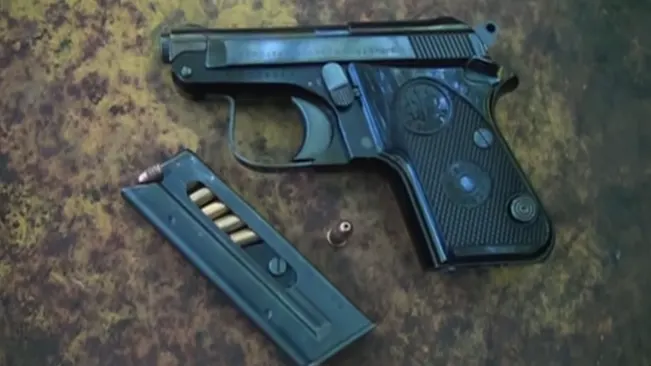
The Model 950, with its semi-automatic operation and the innovative tip-up barrel design, offers users the convenience of easy loading and maintenance, while the Tomcat builds on this foundation with a more robust .32 ACP caliber, providing a slightly more powerful option without sacrificing compactness. Both models feature ergonomic designs that make them comfortable to hold and shoot, even for individuals with smaller hands, ensuring that user-friendliness is at the forefront of their appeal.

Additionally, the aesthetic appeal of Beretta’s compact pistols, with their sleek lines and quality finishes, speaks to a user base that values both form and function in their choice of firearm. The balance between compact size, reliability, and ease of use makes Beretta’s compact pistols an attractive option for everyday carry, offering peace of mind to those who carry them, knowing they have a tool that is both effective and discreet. This combination of features has solidified Beretta’s reputation in the compact pistol market, making their offerings a go-to choice for discerning shooters looking for a firearm that excels in both performance and portability.
Pros and Cons
Pros
- The tip-up barrel design allows for easy loading and unloading of the chamber without the need to rack the slide, making it ideal for individuals with limited hand strength or dexterity.
- Direct chamber loading minimizes the risk of accidental discharge during loading and unloading, as it offers a clear visual confirmation that the chamber is empty or loaded.
- These pistols are designed for concealability and ease of carry, making them excellent choices for concealed carry permit holders looking for a lightweight and discreet option.
- The simplicity of the design and the operation of Beretta’s tip-up barreled pistols make them suitable for inexperienced shooters or those new to firearms.
- Beretta’s reputation for quality and durability extends to its tip-up barreled pistols, offering reliable performance in a range of conditions.
Cons
- The tip-up barrel design is generally found in smaller calibers, which may not provide the stopping power desired by some users for self-defense situations.
- Some models, like the Model 21 Bobcat, can be particular about ammunition, requiring high-quality rounds for optimal reliability, which could be a concern for users in areas with limited ammunition availability.
- The compact design, while advantageous for concealment and carry, may not fit comfortably in larger hands, potentially affecting grip and control during shooting.
- For those models that do allow for traditional slide operation, the slide can be stiff and challenging to operate, negating some of the accessibility benefits of the tip-up design.
Safety Tips
- Even if you believe a firearm is unloaded, handle it with the care and respect you would give it if it were loaded.
- This is a fundamental safety rule to prevent injury in case of an accidental discharge. A safe direction means that the gun is pointed so that even if it were to go off, it would not cause injury or damage.
- Familiarize yourself with the operation of the tip-up barrel feature. Ensure the firearm is pointed in a safe direction when loading or unloading the chamber.
- Your finger should rest outside the trigger guard until you are aimed at the target and have decided to fire.
- Make sure you are using the appropriate caliber and type of ammunition for your specific Beretta model. Using incorrect or substandard ammunition can lead to malfunctions and potentially dangerous situations.
- Always wear protective eyewear and earplugs or earmuffs when shooting to protect against noise and flying debris.
- Regular cleaning and maintenance are crucial for the reliable and safe operation of any firearm. Ensure that the tip-up barrel mechanism is free of debris and functions smoothly.
- When not in use, store your firearms unloaded in a locked cabinet, safe, gun vault, or storage case, preferably with a trigger lock or other security device. Ammunition should be stored separately.
- Be knowledgeable about the laws related to firearm ownership and use in your area. If you live with others or have visitors, ensure they understand the importance of gun safety and know that they should never handle firearms without permission and supervision.
- Familiarity with your firearm’s operation, including loading, unloading, and firing, is key to safe handling. Regular practice at a range can help build muscle memory and confidence, reducing the risk of accidents.
FAQs
- What is a tip-up barreled pistol? A tip-up barreled pistol features a design where the barrel can be tipped up at the front, allowing a round to be inserted directly into the chamber without racking the slide. This design simplifies the loading and unloading process, making it easier for those with limited hand strength.
- Why did Beretta introduce tip-up barreled pistols? Beretta introduced tip-up barreled pistols to offer a user-friendly firearm that was easy to load and maintain, particularly appealing to first-time shooters, those with physical limitations, and individuals looking for a convenient concealed carry option.
- What makes the Beretta 950 Jetfire notable? The Beretta 950 Jetfire is notable for being a compact, reliable pistol with a tip-up barrel design. Its small size and ease of use made it a popular choice for concealed carry and as a backup firearm, even famously being James Bond’s first choice in the early movies.
- How does the .25 ACP caliber compare to other self-defense calibers? The .25 ACP (Automatic Colt Pistol) caliber is smaller and less powerful than many self-defense calibers, such as the 9mm or .380 ACP. However, it offers a balance between recoil management and stopping power, suitable for close-range self-defense, especially in highly concealable firearms.
- What are the main differences between the Beretta Tomcat and the Model 21 Bobcat? The main differences between the Beretta Tomcat and the Model 21 Bobcat lie in their caliber and size. The Tomcat is chambered in .32 ACP, offering a slightly larger caliber option, while the Model 21 Bobcat is available in .22 LR and .25 ACP, known for its compact size and lighter recoil.
- Why was the Beretta Model 86 discontinued? The Beretta Model 86 was discontinued due to its larger size compared to other .380 ACP pistols and the increasing market demand for more compact, easily concealable firearms. The introduction of micro-compact pistols made larger framed models like the Model 86 less desirable for concealed carry.
- Can the tip-up barrel design improve safety? How? Yes, the tip-up barrel design can improve safety by allowing the user to load and unload the chamber directly without having to manipulate the slide, reducing the risk of accidental discharge. It also allows for easier visual inspection of the chamber to confirm if the firearm is loaded.
- What ammunition is recommended for Beretta’s Model 21 Bobcat? For the Beretta Model 21 Bobcat, high-quality .22 LR ammunition like CCI Stingers or Mini-Mags is recommended to ensure reliable performance and minimize the risk of misfires or jams, especially given the model’s sensitivity to ammunition type.
- How do Beretta’s tip-up barreled pistols cater to individuals with weak hands or arthritis? Beretta’s tip-up barreled pistols are ideal for individuals with weak hands or arthritis because they eliminate the need to rack the slide, a task that can be challenging. Instead, the barrel tips up for easy loading, making these pistols more accessible for those with limited hand strength.
- Are Beretta tip-up barreled pistols still popular today? Yes, Beretta tip-up barreled pistols continue to enjoy popularity for their unique blend of compactness, ease of use, and reliability. They remain sought after by collectors, concealed carry enthusiasts, and those appreciating the historical and practical aspects of these innovative firearms.
We’re eager to hear from you! Share your personal experiences and insights on Beretta’s Tip-Up Pistols and their role in the evolution of concealed carry. Your feedback in the comments section below could provide valuable perspectives for fellow enthusiasts looking to make informed choices in their concealed carry options. Let’s dive into the discussion and explore the impact of these innovative firearms together!
Latest Post
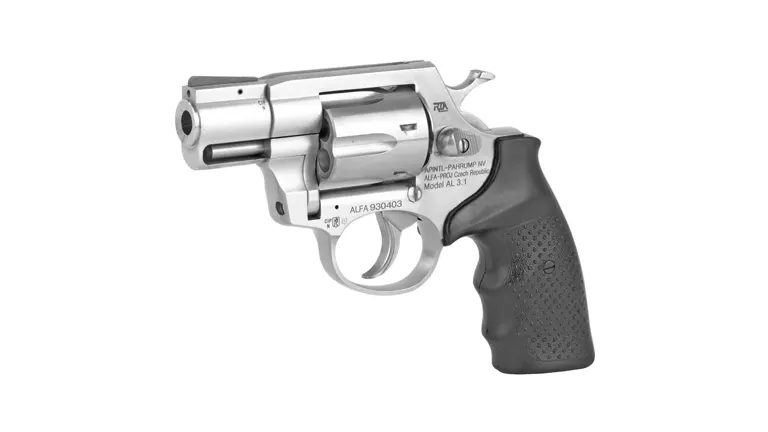
Rock Island Armory AL3.1 Review
Rock Island Armory AL3.1 revolver with a matte stainless finish and a textured grip.March 8, 2024
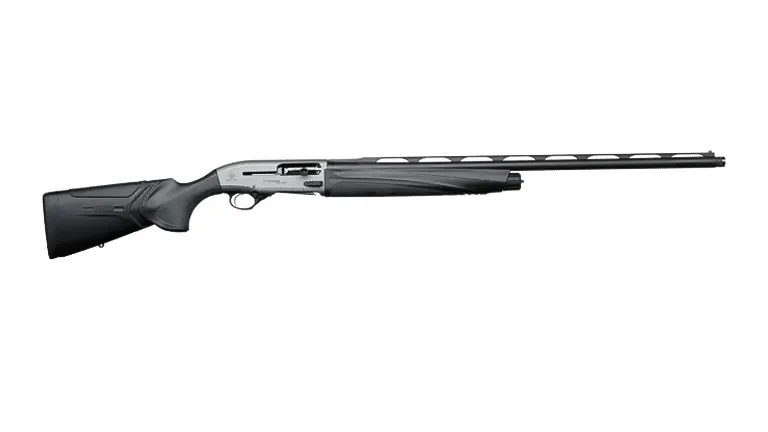
Beretta A400 Xtreme Plus Review
Explore the Beretta A400 Xtreme Plus, a 12-gauge, 3 ½” semi-auto with a 3+1 capacity,...March 7, 2024
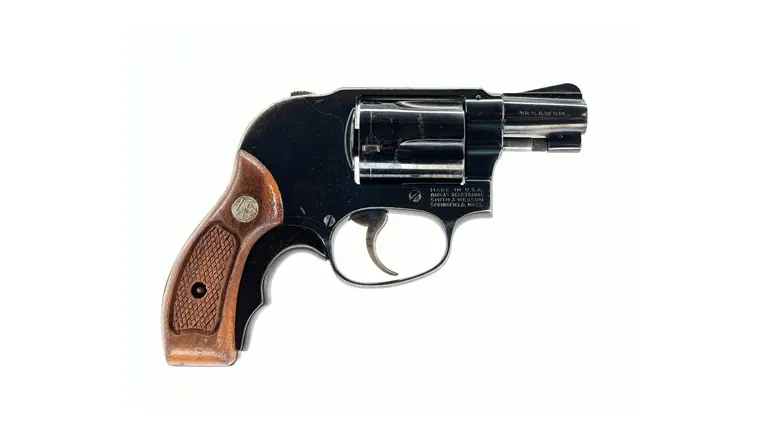
Smith & Wesson Model 49 Bodyguard Review
Explore the Smith & Wesson Model 49 Bodyguard, a .38 Special with a compact 1.875″...March 7, 2024
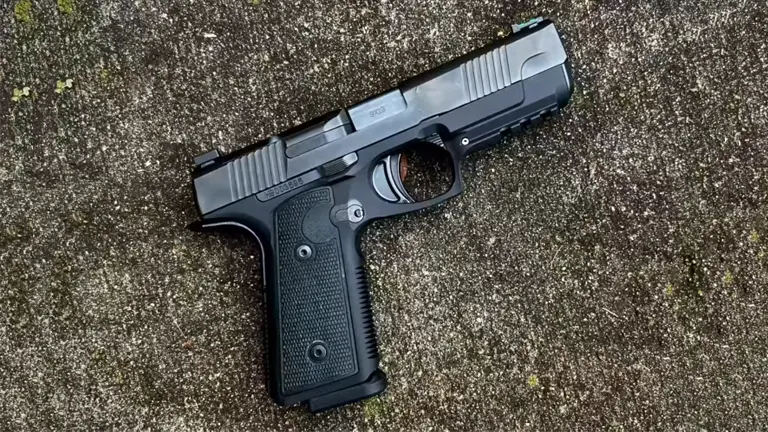
Daniel Defense H9 Review
Discover the Daniel Defense H9 in 9mm Luger, a semi-auto with a 4.5″ cold hammer-forged...March 4, 2024
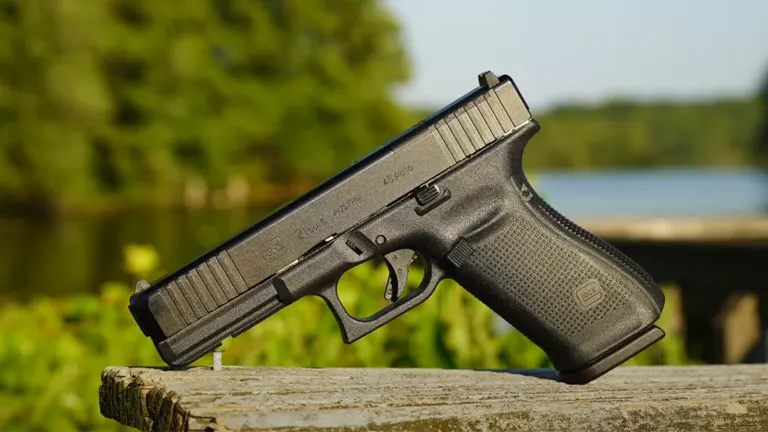
Glock 21 Review
Experience the power of the Glock 21 in .45 ACP, featuring a 13-round capacity, 4.60″...March 4, 2024
Weekly Newsletter
Do you want to get notified when a new article is added to Guncritic? Sign up for our newsletter and you'll be among the first to find out about new articles and reviews.
Comment